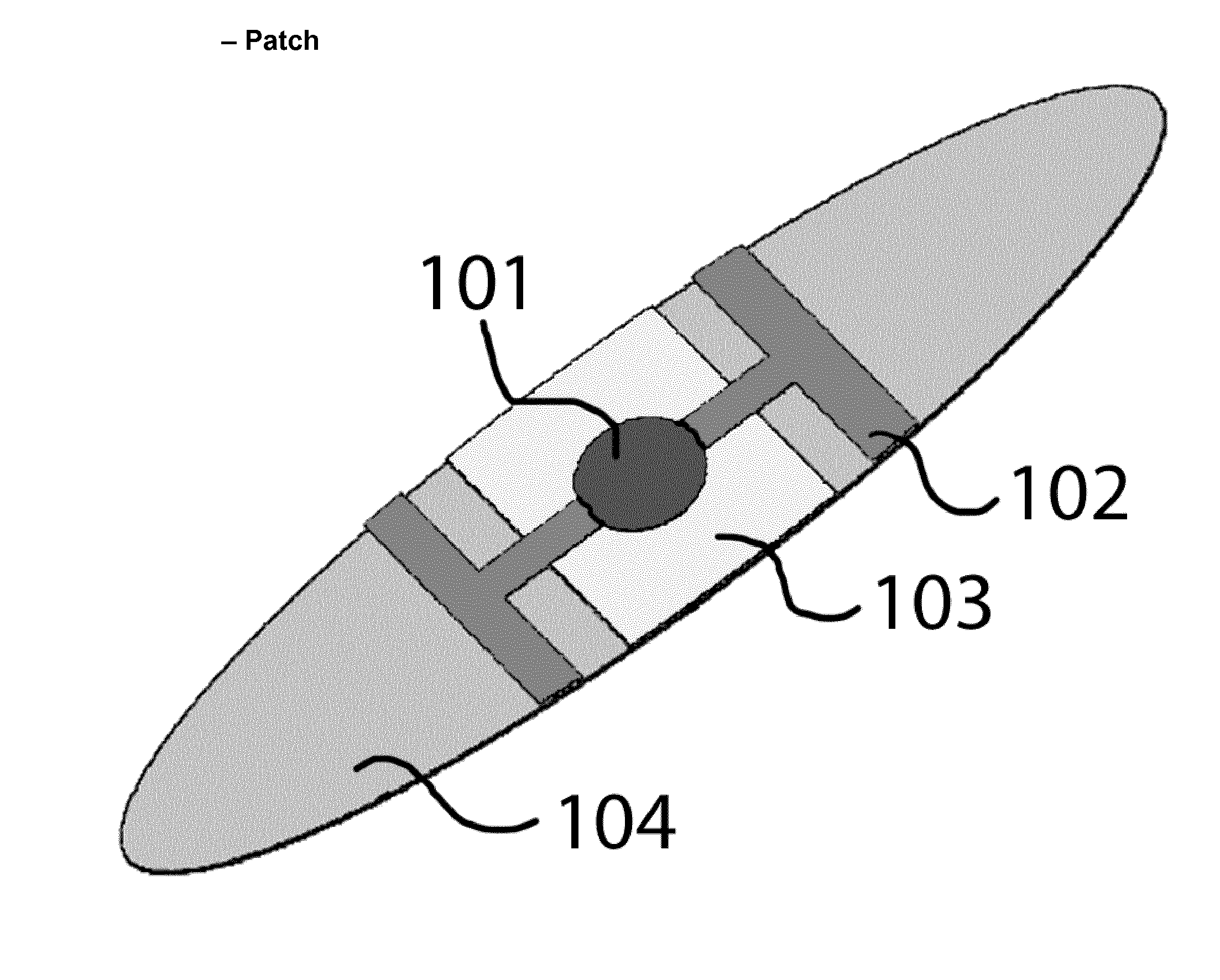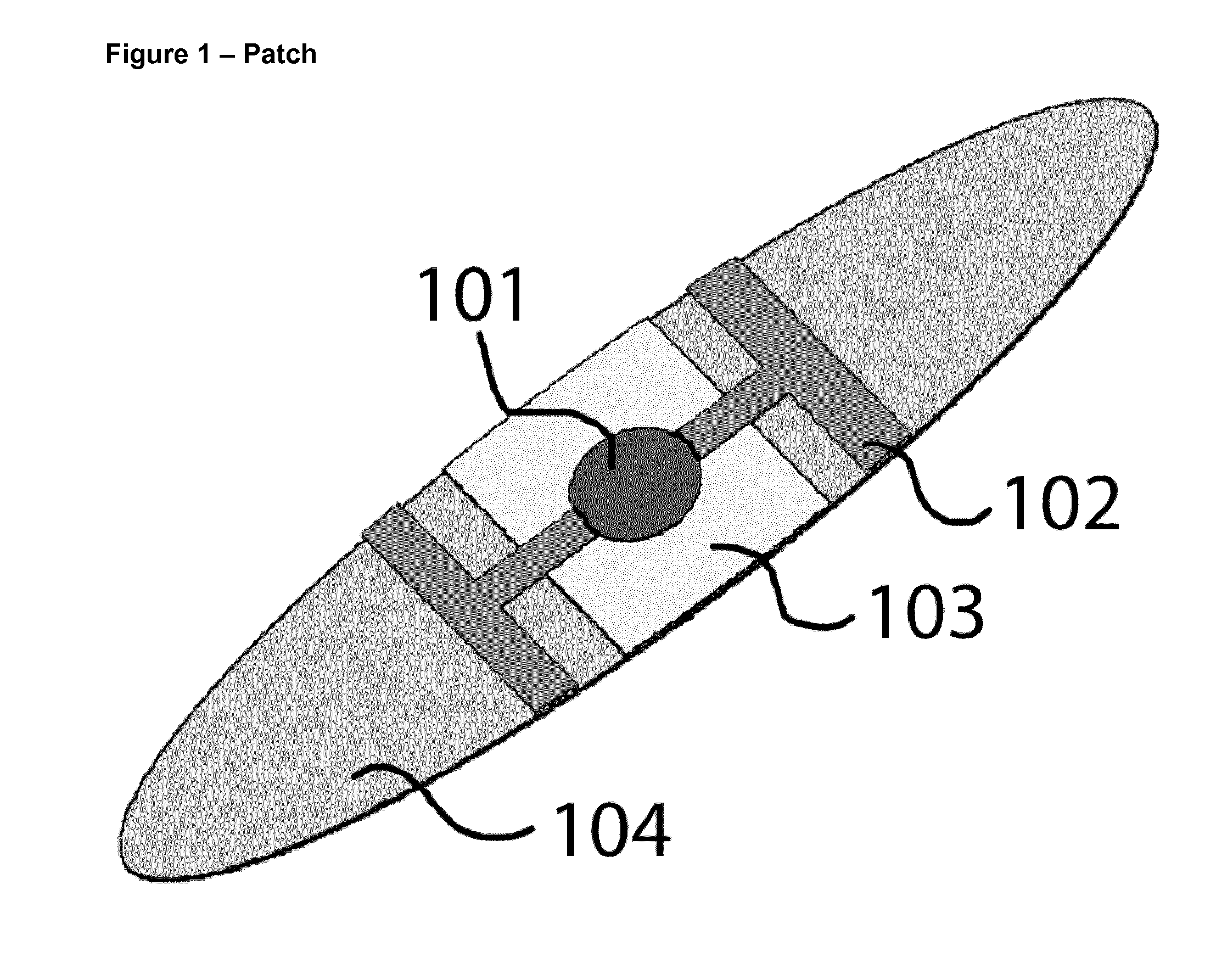Device to measure analytes in the skin
a technology for measuring devices and analytes, applied in the field of skin patches, can solve problems such as not being able to solve, and achieve the effect of reducing the time required for sampling and reliable and/or improving the way of determining the level of different analytes
- Summary
- Abstract
- Description
- Claims
- Application Information
AI Technical Summary
Benefits of technology
Problems solved by technology
Method used
Image
Examples
example 1
Preparing the Analysis Patch Containing hBD1 and IL1a Capture Antibodies
[0122]The analysis patch was produced using capture antibodies from a Human IL-1a ELISA Development Kit (Catalogue no. 900-K11 from PeproTech) at a concentration of 50 μg / ml; and Human HBD 1 ELISA Development Kit (Catalogue no. 900-K202 from PeproTech) at a concentration of 50 μg / ml. As Negative control 1×PBS-20% Glycerol was used, and as positive control hBD1 detection antibody 50 μg / ml was used. The capture antibodies were spotted onto the membrane using a non-contact dispersing system (BioDot AD 3400 with BioJet plus dispersing system). In this example the spot volume dispersed was 30 nl.
example 2
Exposure of the Analysis Patch to the Skin
[0123]Place the analysis patch on the skin (control for tight attachment, membrane has to have a good contact with the skin) and wet the patch (expanding layer, analysis membrane) with 150 μl 1×PBS. Keep the patch in contact with the skin for 15 min. Remove patch and separate membrane from the rest of the patch. Place membrane into 48-well plate well with the protein side up.
example 3
Visualisation of Analyte Bound to the Membrane
[0124]In order to visualise the analyte bound to the membrane after exposure to the skin the membrane is incubated with detection antibodies in the following manner. Wash membranes 3×5 min in 200 μl wash buffer. Prepare detection antibody solution mix, hBD-1, 1:2000 and IL-1a, 1:1000 in diluent buffer. Incubate membranes with detection antibody solution 45 min at room temperature RT on shaker. Wash membranes 5×5 min with 200 μl wash buffer each time.
[0125]The signal is amplified using the Catalyzed Signal Amplification (CSA) System (Dako) in the following manner. Prepare Streptavidin-Biotin complex: 1 drop (one drop is ˜40 μl) Streptavidin Biotin Complex Reagent A, 1 drop Streptavidin Biotin Complex Reagent B and up to 1 ml Streptavidin Biotin Complex Reagent solution. Dilute prepared Streptavidin Biotin Complex Reagent for 1 / 9 in 1×PBS-0.05% Tween. Pipet in each well 150 μl solution and incubate for 15 min room temperature (RT). Wash me...
PUM
 Login to View More
Login to View More Abstract
Description
Claims
Application Information
 Login to View More
Login to View More - R&D
- Intellectual Property
- Life Sciences
- Materials
- Tech Scout
- Unparalleled Data Quality
- Higher Quality Content
- 60% Fewer Hallucinations
Browse by: Latest US Patents, China's latest patents, Technical Efficacy Thesaurus, Application Domain, Technology Topic, Popular Technical Reports.
© 2025 PatSnap. All rights reserved.Legal|Privacy policy|Modern Slavery Act Transparency Statement|Sitemap|About US| Contact US: help@patsnap.com



